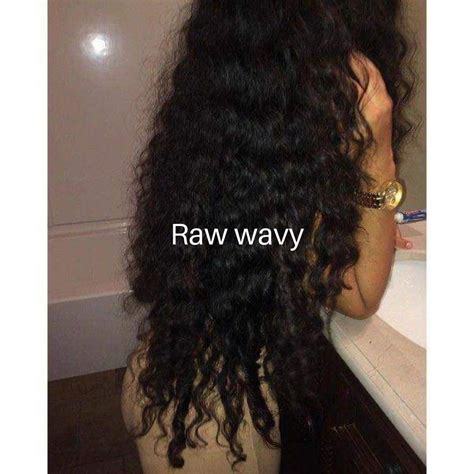Understanding Burmese Curly Hair
Burmese curly hair is a unique and captivating hair type characterized by its tight, springy curls that form ringlets. This hair texture, also known as type 4B, is predominantly found in individuals of Burmese descent, but it can also occur in other ethnic groups. With its distinct appearance and inherent beauty, Burmese curly hair has gained increasing popularity in recent years, inspiring a growing community of hair enthusiasts who celebrate its individuality and embrace its versatility.

Key Characteristics
- Tight, Springy Curls: Burmese curly hair is defined by its tightly coiled curls that form ringlets and create a voluminous texture.
- Spiral Formation: The curls typically exhibit a spiral pattern, resulting in a distinctive and eye-catching appearance.
- Volume and Density: Burmese curly hair tends to have a high volume and dense texture, creating a full and lush look.
- Porosity: This hair type is generally low-porosity, meaning it has a tightly packed cuticle that limits moisture absorption.
Benefits of Burmese Curly Hair
- Unique and Beautiful: Burmese curly hair stands out with its exceptional beauty and uniqueness, adding a touch of personality and flair to any individual.
- Versatile Styling: The tight curls offer endless styling possibilities, from voluminous afros and bouncy curls to intricate braids and updos.
- Natural Volume: The dense texture and spiral formation naturally create volume, reducing the need for additional styling products.
- Protective Barrier: The tightly coiled curls act as a protective barrier, shielding the scalp from harsh environmental factors such as UV rays and pollution.
Considerations for Burmese Curly Hair
- Moisture Management: Low-porosity hair requires extra care to maintain hydration. Regular deep conditioning and moisture-rich products are essential.
- Detangling: The tight curls can be prone to tangling, so gentle detangling techniques and appropriate hair tools are crucial.
- Hair Breakage: Burmese curly hair is delicate and prone to breakage if not handled with care. Avoid excessive brushing and harsh styling practices.
Hair Care Tips for Burmese Curly Hair
- Moisturize Regularly: Deep condition weekly with nourishing hair masks or leave-in conditioners to replenish moisture and prevent dryness.
- Use Gentle Products: Opt for products specifically designed for curly hair, which are less likely to strip away natural oils and cause dryness.
- Detangle with Care: Use a wide-toothed comb or detangling brush to gently remove tangles, starting from the ends and working your way up to the roots.
- Protect from Breakage: Avoid over-brushing and minimize the use of heat styling tools. Use silk pillowcases to prevent friction and breakage while sleeping.
The Future of Burmese Curly Hair: Embracing Embracing Heritage
Burmese curly hair is a cultural and aesthetic treasure that deserves recognition and celebration. Embracing this unique hair type empowers individuals to embrace their heritage and express their individuality. By fostering a positive and inclusive environment, we can create a society that values and appreciates the beauty and diversity of all hair textures.
Beyond Aesthetics: The Science of Burmese Curly Hair
The distinct characteristics of Burmese curly hair extend beyond aesthetics and are rooted in scientific principles. The tight curls and low porosity are attributed to the shape of the hair follicles and the distribution of melanin pigments within the hair shaft. Understanding the science behind this hair type allows researchers and haircare professionals to develop innovative products and treatments that specifically cater to the unique needs of Burmese curly hair.
Economic Opportunities: The Curly Hair Revolution
The growing popularity of Burmese curly hair has sparked a thriving industry, creating economic opportunities for haircare brands, stylists, and fashion designers. By embracing the diversity of hair textures, businesses can tap into a vast and underserved market, opening doors to inclusivity and economic empowerment.
Tables
Table 1: Prevalence of Burmese Curly Hair
| Country | Prevalence |
|---|---|
| Myanmar | 60-70% |
| Thailand | 20-30% |
| Cambodia | 10-15% |
| Laos | 5-10% |
Table 2: Characteristics of Burmese Curly Hair
| Characteristic | Description |
|---|---|
| Curl Type | 4B |
| Curl Pattern | Tight, springy curls |
| Volume | High |
| Density | Dense |
| Porosity | Low |
Table 3: Hair Care Tips for Burmese Curly Hair
| Tip | Explanation |
|---|---|
| Moisturize Regularly | Deep condition weekly with nourishing hair masks or leave-in conditioners to replenish moisture and prevent dryness. |
| Use Gentle Products | Opt for products specifically designed for curly hair, which are less likely to strip away natural oils and cause dryness. |
| Detangle with Care | Use a wide-toothed comb or detangling brush to gently remove tangles, starting from the ends and working your way up to the roots. |
| Protect from Breakage | Avoid over-brushing and minimize the use of heat styling tools. Use silk pillowcases to prevent friction and breakage while sleeping. |
Table 4: Economic Impact of Burmese Curly Hair Industry
| Sector | Impact |
|---|---|
| Haircare Products | Increased demand for specialized products |
| Hair Stylists | Growing clientele seeking expert styling services |
| Fashion Design | Increased representation of curly hair textures in fashion |
| Cultural Heritage | Recognition and appreciation of Burmese cultural identity |
